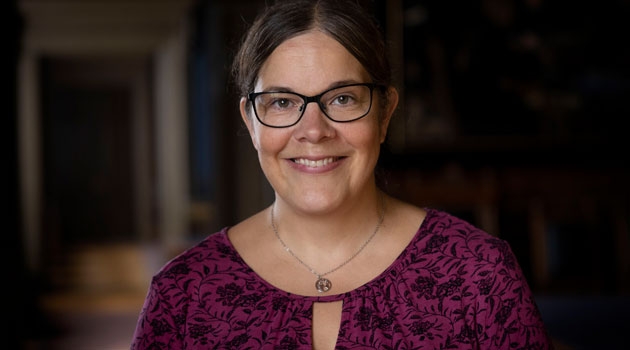“My research can be a bridge between materials research and electrical machine research”
Hi there… Sandra Eriksson, recently appointed professor in electricity who specialises in permanent magnet electrical machines at the Department of Electrical Engineering, who is one of 86 new professors at Uppsala University.
In your inaugural lecture Generators and motors for sustainable electrification in November, you talked about your research in designing and modelling of generators and electric motors. How is this kind of research done?
“My research is about designing permanent magnet electrical machines, which use magnets instead of say current coils to achieve a magnetic field in the machine. Permanent magnet machines are becoming increasingly popular, in part due to their high efficiency. I explore how the machine’s design needs to be changed to suit alternative magnetic materials using methods such as analytical calculations, simulations and experimental testing, as well as verification. Using these methods, I try to model and study magnetic materials in detail in order to better understand how they work, what their limitations are, and how small changes in them could improve the performance of a motor or generator.
“Here at Uppsala University, my colleagues are also researching more sustainable old or new magnetic materials, where the emphasis is on replacing magnets that use rare earth metals with alternative magnetic materials. I also work with materials researchers as part of a European consortium. That’s where I think that my research can be a bridge between materials research and electrical machine research.”
Why is the use of rare earth metals so problematic?
“Part of the problem is that China today accounts for 98 per cent of the supply of these rare earth metals to the EU. Magnets containing rare earth metals are used in generators in wind turbines for example, and 93 per cent of all electric cars sold in 2018 had motors that used these metals. Alternatives are needed to safeguard supply and avoid price fluctuations. It’s also a complicated process to extract these metals because they are in such low concentrations, and they are mined in hazardous work environments that produce large quantities of unwanted residues and hazardous waste.”
What are the alternatives for replacing these metals in electrical machines?
“There are a number of options. You either attempt to find new, more sustainable magnetic materials, or use ‘old’ materials such as ferrites, which are ceramic materials consisting of oxidized iron and other metals. Ferrites already exist, but the materials researchers I work with focus on producing stronger variants. The advantage of ceramic ferrite magnets is that they don’t rust and have a very long life. If high-performance motors and generators can be designed using these magnets, they have the potential to replace rare earth metals in a growing area of application.”
Is it a big step from your research to the market?
“My research involves both basic research and applied research. I often carry out applied research in partnerships with industry focusing on the design of electrical machines with permanent magnets. I have ongoing partnerships with Scania concerning truck motors and have also collaborated with wind power and wave energy companies. So it’s actually not such a big step to application.”
Where does the big challenge lie in your research and how do you see the future?
“There are a great many different factors to consider: the mechanical design and electrical, magnetic and thermal design all have to work together. The mechanical part in particular, because with electric car engines some can reach speeds up to 20,000 revolutions per minute. It all has to hold together, and that’s where it gets truly multidisciplinary.
“The future looks promising, as we have the electrification of the entire transport sector ahead of us and the current challenge concerning critical raw materials. In the energy transition we are going through, the share of renewable energy is increasing and that places heavy demands on new technological solutions and the use of smart material choices. I hope that my research will contribute to a more environmentally friendly energy system.”
Anneli Björkman

